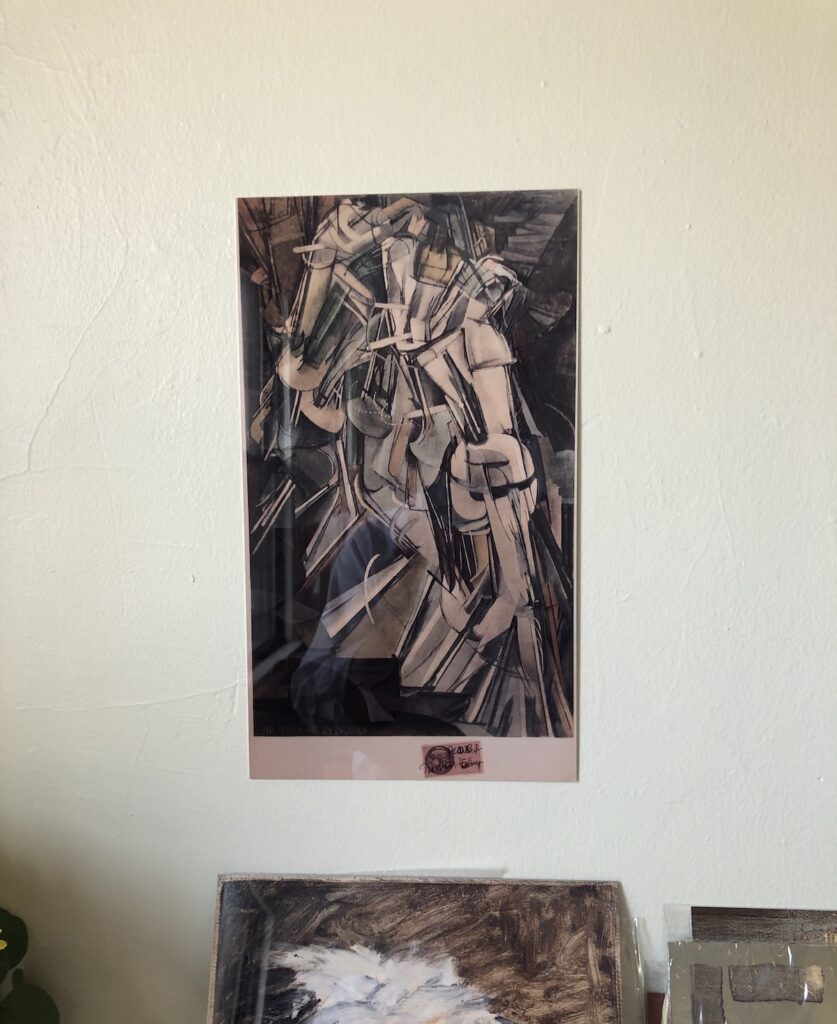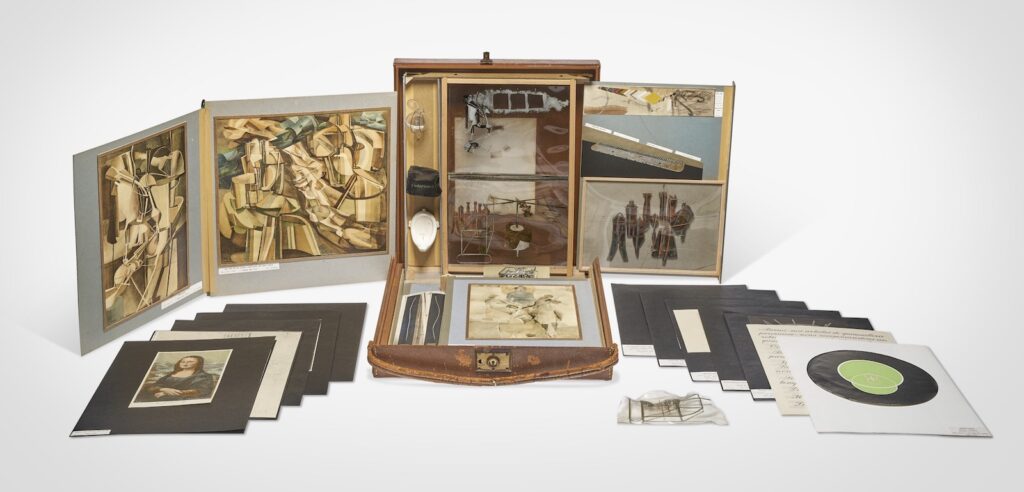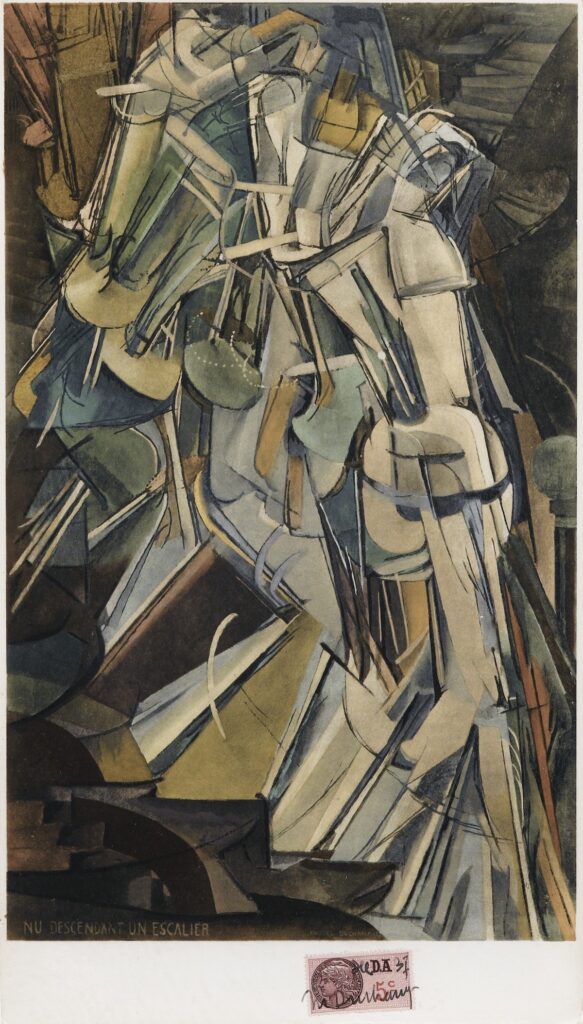
If a history of the Facsimile Object is written, credit for the term will be given to Gerhard Richter (or his printmeister Joe Hage? Inquiring art historians will want to know!), but the inspo for us all will obviously be Marcel Duchamp.
Duchamp spent a large part of his career conceiving and producing facsimiles of his artworks, most of that while publicly claiming to have stopped making art. This seeming contradiction, along with the attention Duchamp paid to both the objects he was making and the mechanisms of authentication he appropriated, are still too often treated as a side hustle to his readymades legacy.
Consider, for example, the abstract for Elena Filipovic’s tantalizingly titled 2013 dissertation, advised by Hal Foster, “The Apparently Marginal Activities of Marcel Duchamp”:
This study focuses on a series of fugitive operations (or what I am calling “activities”) that Marcel Duchamp (1887–1968) incited in order to test, theorize, position, and even make his work as such· Not conventionally “artistic” in nature, even if intimately connected to the collection, presentation, reception, and valuation of art, these activities include Duchamp’s role as administrator, archivist, art advisor, curator, publicist, reproduction-maker, and salesman of his own oeuvre· Rather than merely procedural, auxiliary, or incidental, they might be thought of as constitutive, resulting in a still understudied but profoundly influential output by an artist who redefined so much of what, hence forth, would be called art.
Yet even after a deep investigation of Duchamp’s intensive production of the Box of 1914, the Boîte verte, and the multiple incarnations over decades of, by the time MIT publishes this in 2016, these are emphatically bracketed off as Duchamp’s “non-art activities.” And the only one that really matters, the eminent curator concludes, is curating.

Ironically (sic) it is left to the connoisseurship of the market to do the close looking at the products of Duchamp’s activities. So even though he’s never far from my mind, the appearance of Roberto Matta’s deluxe Series A copy of La Boîte-en-valise at Christie’s in May, right in the middle of Facsimile Object season, made me start looking for candidates. With 69 meticulously produced elements in seven editions over 30 years, there’s a lot to work with. [I should be more precise and say this Boîte was from the collection of Patricia Kane O’Connell & Roberto Matta. Patricia kept the deluxe Boîte when she divorced Matta in 1948 to marry his and Duchamp’s dealer Pierre Matisse, at which point she took over the production and distribution of Boîtes for several years. Matisse’s ex-wife Teeny then married Duchamp.]

Anyway, one possibility was a scrap of a note, in Duchamp’s hand, where he’d recorded the recipients of the first couple dozen Boîtes-en-valise. It has a great, torn edge, and if I could get it right, it’d make a nice homage to the Boîte verte. Duchamp created zinc templates for reproducing the tears of those pages, though, a technique which won’t work so well for aluminum.

So I thought I’d try a classic, Nude Descending a Staircase, No. 2, pochoir on collotype reproductions of his iconic painting which Duchamp made for la-Boîte-en-valise in 1937. To finance the project, he sold a few loosies, made as facsimiles, sold as originals, and authenticated just like his father the notaire used to do, with a signature and date across a postage stamp.
The meta works, I’m intrigued by a glossy metal facsimile of a work on paper [cf.], and the size is great, 35 x 20 cm, but it turns out I get a little bugged by the cropping. Part of the problem is production, where I can’t find a printer who can work with less than a 1/4″ tolerance. That results in aggressive crops or extraneous borders. If only I could find a good printer who works in metric.
Another source, though, is the source images themselves. Somehow it’s only when you’re trying to make an accurate facsimile of an object you start to notice the incompleteness of so many images in circulation. Photographers love cropping out the borders. It turns out the public visibility of the unframed rawness of that first Manet dog painting was an exception, not the rule. And it’s been rough around the edges, literally, to find a satisfactory image of this Duchamp. Never mind that there are multiple, unique versions, and so a Facsimile Object could only ever actually be a facsimile of one object among many. Which is interesting in itself, though maybe not a compelling sell.
And another complicating factor, unsurprisingly, is the aggressive copyright claims of the Duchamp estate, which make me laugh every time I see a caption claiming a 2021 copyright on a picture of a 1912 painting. Would they appreciate the transformative and critical engagement? I’m not sure I want to facs around and find out. But it does look pretty, sweet, and shiny. And to paraphrase Richter, “I wanted to trace him as precisely as possible, maybe because I wanted to own such a beautiful Duchamp…[laughs]”
